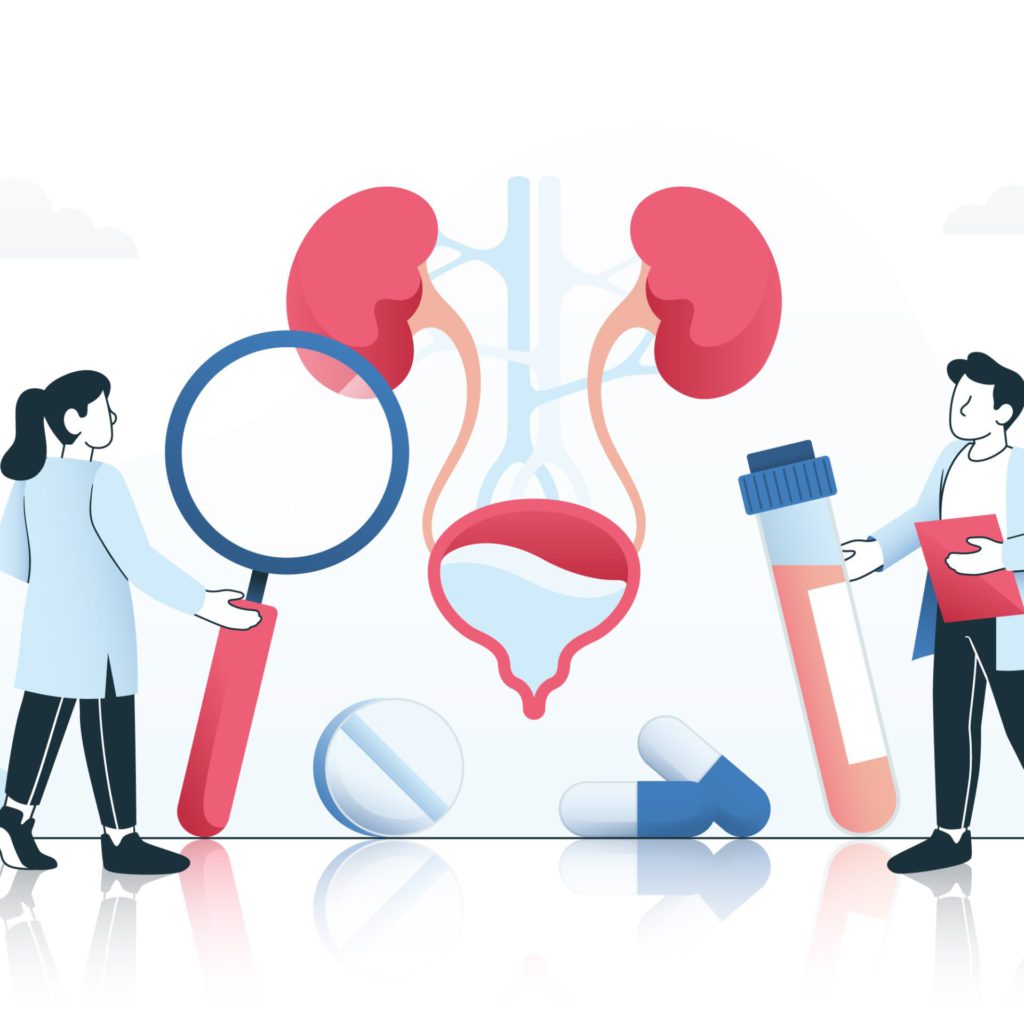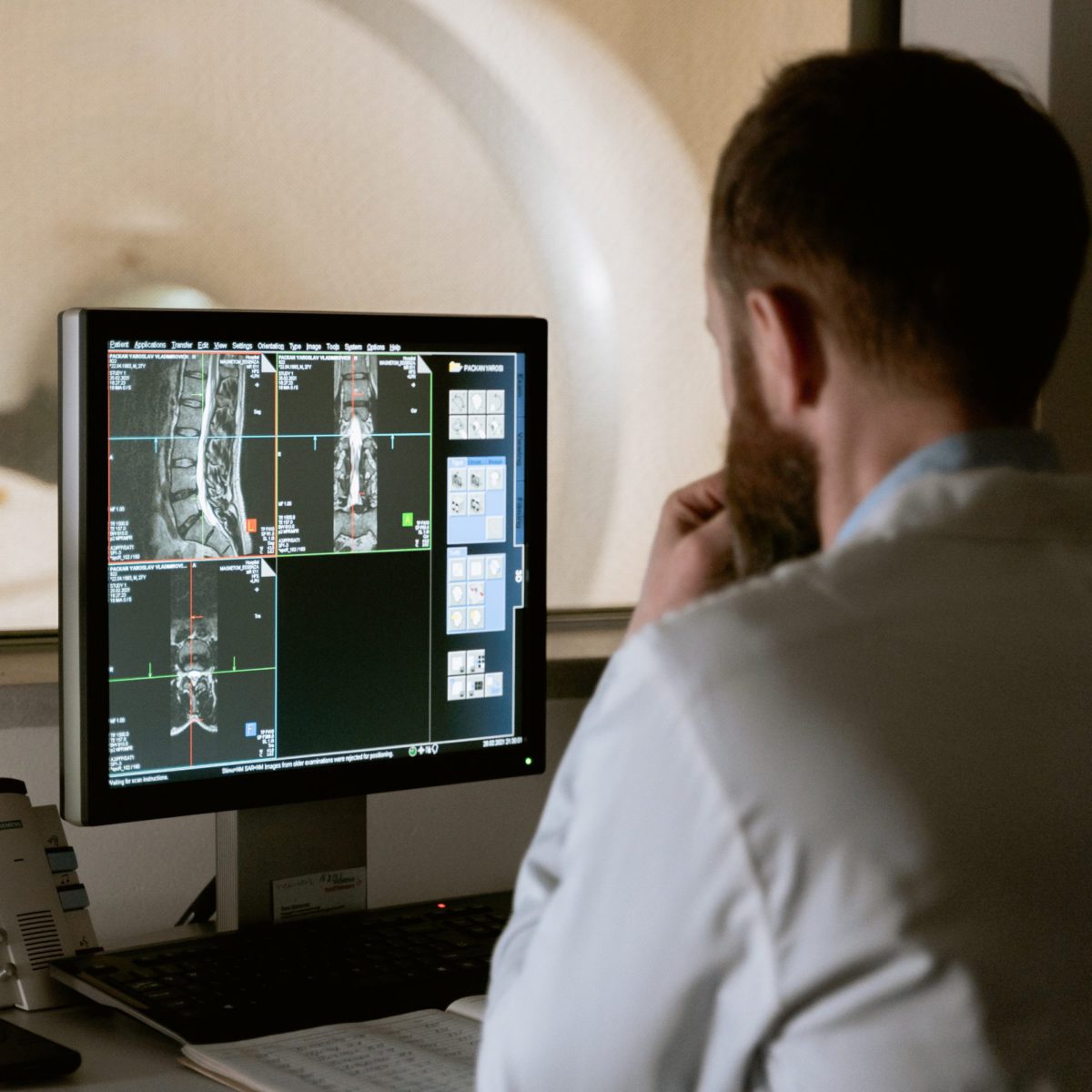Bladder Cancer 101: Understanding Types, Stages, and Spread

Welcome to our comprehensive overview of bladder cancer, where we will delve into important aspects such as symptoms, causes, stages, and treatment options. The bladder, a hollow organ located in the pelvis, plays a crucial role in storing urine as part of the urinary tract.
When the healthy cells lining the bladder begin to grow abnormally and uncontrollably, it can lead to the development of bladder cancer. Recognizing the signs and symptoms associated with this condition is vital, including noticeable changes in urine color or frequency.
This page offers an overview of bladder cancer and answers some of the most common questions about it.
What is Bladder Cancer?
Bladder cancer occurs when the cells that make up the urinary bladder begin to grow out of control. Most commonly, the cancerous tumor grows from the urothelial cells lining the inside of your bladder.
The bladder is only made up of one part of a person’s urinary tract. The parts of the urinary tract include:
- Kidneys – Located below the ribs. Their function is to remove waster products and balance the body’s fluids.
- Ureters – Two narrow tubes that carry urine from the kidneys to the bladder. The ureters tighten (contract) and relax (expand) to move the urine downwards.
- Bladder – The hollow, triangle-shaped organ located in the abdomen that stores urine until it can exit via the urethra.
- Urethra – A long tube connected to the bladder that allows urine to exit the body.
The reason it’s important to understand the different parts of the urinary tract is that bladder cancer only refers to cancer of the bladder itself. If an individual has cancer in the ureters it’s often called upper tract urothelial cancer, while kidney cancer also is given a different diagnosis. Different cancer diagnoses can often mean different symptoms and treatment plans.
What are the Types of Bladder Cancer?
Typically, bladder cancer is classified into three different types based on the type of cell that is cancerous. The three types of bladder cancer include:
- Urothelial carcinoma (transitional cell carcinoma) – the urothelial cells line the inside of your bladder. They are able to expand and contract based on how full your bladder is.
- Squamous cell carcinoma – caused by chronic swelling and irritation of the lining of the bladder. The frequent irritation can gradually change the urothelial cells into the flat and scale-like squamous cells.
- Adenocarcinoma – Develops from the glandular cells that line your body.
According to Mayo Clinic, urothelial carcinoma accounts for approximately 90% of all bladder cancer cases in the United States. Squamous cell carcinoma accounts for 1% to 2% of bladder cancer cases, while only about 1% of cases are adenocarcinoma.
There are other extremely rare forms of bladder cancer that account for less than 1% of bladder cancer cases in the US. These include small cell carcinoma and sarcoma.

“The good news was that it hasn’t gotten to the muscle, but it is in the lamina propria, which is the lining inside of the bladder and the bladder wall. He said that they took an extra sample just to make sure that they were not missing anything. It was deeper than they thought it was, but it looks like there was no muscle in the tissue.”
LaSonya D. | Learn more about the spread of bladder cancer and self-advocacy
What are the Other Ways of Categorizing Bladder Cancer?
While the types of bladder cancer listed above indicate where the cancer originated. They can also be categorized by far the cancer has spread into the bladder wall and the shape in which the tumor grows.
How Bladder Cancer Spreads
Ways to describe how the bladder cancer has spread include:
- Noninvasive – the cancer is only a small section of tissue and is usually easily removed. The types of bladder cancer that are noninvasive include papillary carcinoma and carcinoma in situ (CIS).
- Non-muscle invasive – The cancer has grown into the layer just below the bladder lining known as the lamina propria.
- Muscle invasive – The muscle has fully grown into the muse of the bladder and sometimes beyond into the fatty layers, surrounding tissue, and even other organs.
It’s important to remember that noninvasive or non-muscle-invasive bladder cancer does have the potential to grow into muscle-invasive bladder cancer. Therefore, all forms of bladder cancer should be taken seriously.
How the Tumor Grows
Bladder cancer can also be described by the shape of the tumor that grows, in addition to how far it spreads. Ways to describe the shape of a bladder cancer tumor include:
- Papillary – long, thin almost finger-like tumors that grow from the surface of the bladder towards the hollow center.
- Flat – just like the name, these are flat almost “patch-like” tumors that grow along a layer of cells rather than towards the center of the bladder.

“They diagnosed me with stage 2 urothelial muscular-invasive bladder cancer. I want to say it was staged N2 because a couple of my lymph nodes were impacted.”
– Ebony G. | Read more about Ebony’s stage 2 urothelial muscular-invasive bladder cancer.
What are the Stages of Bladder Cancer?
Using a staging system in bladder cancer is a way to assess how far the cancer has spread. Treatment plans and the urgency of treatment changes based on which stage the cancer is in. According to the American Cancer Society, the stage bladder cancer is in is assessed using the TNM system:
- T – How far the primary tumor has grown through the bladder wall and if it’s spread to nearby tissue.
- N – If the cancer has spread to any nearby lymph nodes.
- M – If that cancer has become metastatic (spread to distant parts of the body).
Stomach cancer stages run from 0-4. As a rule, the higher the number, the more that cancer has spread. The stages of stomach cancer include:
- Stage 0 – abnormal cells are found in the tissue lining of the bladder but have not invaded the bladder wall.
- Stage 0a – noninvasive papillary carcinoma
- Stage 0is – carcinoma in situ
- Stage 1 – the cancer has spread to the connective tissue next to the bladder but has not reached the muscle.
- Stage 2 – the cancer has spread into the muscle tissue of the bladder.
- Stage 3 – This stage is separated into two sub-stages. In essence, both stages mean that the cancer has spread locally outside of the bladder.
- Stage 3A – the cancer has spread outside of the bladder to the layer of fat surrounding it and potentially to the reproductive organs; OR the cancer has spread to once lymph node not near the common iliac arteries.
- Stage 3B – the cancer has spread to more than one lymph node, not near the common iliac arteries, OR it has spread to one lymph node near the common iliac arteries.
- Stage 4 – this stage is also broken into two substages.
- Stage 4A – The cancer has spread past the bladder wall to the abdomen or pelvis; OR it has spread to multiple lymph nodes above the iliac arteries.
- Stage 4B – The cancer has spread to other parts of the body such as the liver, bones, or lungs.
Does Bladder Cancer Impact Men and Women the Same Way?
While both women and men both are prone to the same symptoms of bladder cancer, men have a higher likelihood of getting bladder cancer.
In fact, a 2015 study published in the European Association of Urology noted that men are 3 to 4 times more likely to get bladder cancer than women. However, women who are diagnosed in more advanced stages of the disease are less likely to have favorable outcomes after receiving treatment.
Are Bladder Cancer and Stomach Cancer the Same?
Even though the bladder and stomach are often associated with each other, bladder and stomach cancer are not the same thing. Stomach cancer is sometimes referred to as gastric cancer and is linked to the digestive system, while bladder cancer is linked to the urinary system.
It is very rare, that stomach cancer metastasizes to the bladder; however, bladder cancer can occasionally grow into the abdominal wall of the stomach.
More Bladder Cancer Patient Stories
Vickie D.
Symptoms: Intermittent pain in the gut and burning sesnsation
Treatment: Chemotherapy (dd-MVAC) and cystectomy (bladder removal surgery)
Margo W.
1st Symptoms: Blood in urine
Treatment: Chemotherapy (methotrexate, vinblastine, doxorubicin and cisplatin) and radical cystectomy
LaSonya D.
Symptom: Blood in urine
Treatment: BCG immunotherapy, cystectomy (bladder removal surgery)
Ebony G.
1st Symptoms: Blood in urine, weight gain
Treatment: MVAC chemotherapy, bladder removal surgery, neobladder
Diagnosis and Treatment for Bladder Cancer
Learn about the diagnosis and treatment process from bladder cancer survivors and medical experts. Discover diagnosis and treatment options./p>
Bladder Cancer Series
Bladder cancer patients Ebony & LaSonya talk about their cancer journey, including their first symptoms, how they processed their diagnosis, treatment options, and how they found support. Dr. Samuel Washington, a urologic surgeon, also gives an overview of bladder cancer and its treatments.






